Archive : Article / Volume 1, Issue 1
- Research Article | DOI:
- https://doi.org/10.58489/2836-5828/001
Principles of Medical Journals Editorship and Medical Editing
Advisor in Pediatrics and Pediatric Psychiatry and expert trainer, The National Training and Development Center and Baghdad Medical City.
Aamir Jalal Al-Mosawi
Aamir Jalal Al-Mosawi, (2022). Principles of Medical Journals Editorship and Medical Editing. Archives of Urology and Nephrology. 1(1). DOI: 10.58489/2836-5828/001.
© 2022 Aamir Jalal Al-Mosawi, this is an open access article distributed under the Creative Commons Attribution License, which permits unrestricted use, distribution, and reproduction in any medium, provided the original work is properly cited.
- Received Date: 11-10-2022
- Accepted Date: 31-10-2022
- Published Date: 23-12-2022
Medical journals editorship, medical editing
Abstract
Peer reviewed medical journals are established with main aim of publishing scientific reliable articles that accurately reflect current medical knowledge and add additional information to the available medical information. Medical editorship and medical editing represent some of the important tools and practices of medical knowledge management which enables doctors to generate knowledge, and to share, translate and apply what they know to create value and improve effectiveness. The aim of this paper is to provide a concise but comprehensive guide about the practice of medical journals editorship and medical editing.
Introduction
A scientific journal is a periodical publication with main aim of contributing to the advancement and progress of science, mostly by reporting new research. There are thousands of scientific journals in publication, and many more have been published at various times during history. Most scientific journals are highly specialized in specific field such as medicine. Medical journals can be generalized like “The New Iraqi Journal of Medicine” or more specialized to one medical subspecialty such as “Nephrology” However; some old journals such as “Nature” publish articles across a broad range of scientific fields. Scientific journals publish articles that have been peer reviewed, to make sure as possible that the published articles adhere to the current standards of quality, and scientific validity and have adequate scientific strength, and add something to the current knowledge in the field. It is of prime importance for academics and scholars to distinguish between professional magazines and scientific journals.
Articles of a scientific journal are rarely read casually, as one would read a magazine which can be superficially similar to scientific journals. Scientific journals adopt a scientific method when publishing research. Articles describing experiments or calculations in scientific journals have to give enough details that to allow other researchers to repeat the experiment or calculation and confirm the results. This will lead to very important difference between a scientific journal and a professional magazine; article published in scientific journals become part of the permanent scientific records. Therefore, articles in scientific journals can be used in research and higher education. Scientific articles can be used by authors to get professional and academic promotions, and therefore, scientific journals are also called academic journals.
Scientific journals was probably first started in the 1665, when the French Journal des sçavans (Figure-1A) and the English Philosophical Transactions of the Royal Society (Figure-1B) started publishing research results in a scientific way. Medical Essays and Observations (Figure-1C) was the first scientific medical journal and it was first published in 1731 in Edinburgh.

Figure-1A: The Journal des sçavans (later titles: Journal des savans and Journal des savants) is the scientific journal published in Europe. The journal was launched on the on Monday, the 5th of January, 1665
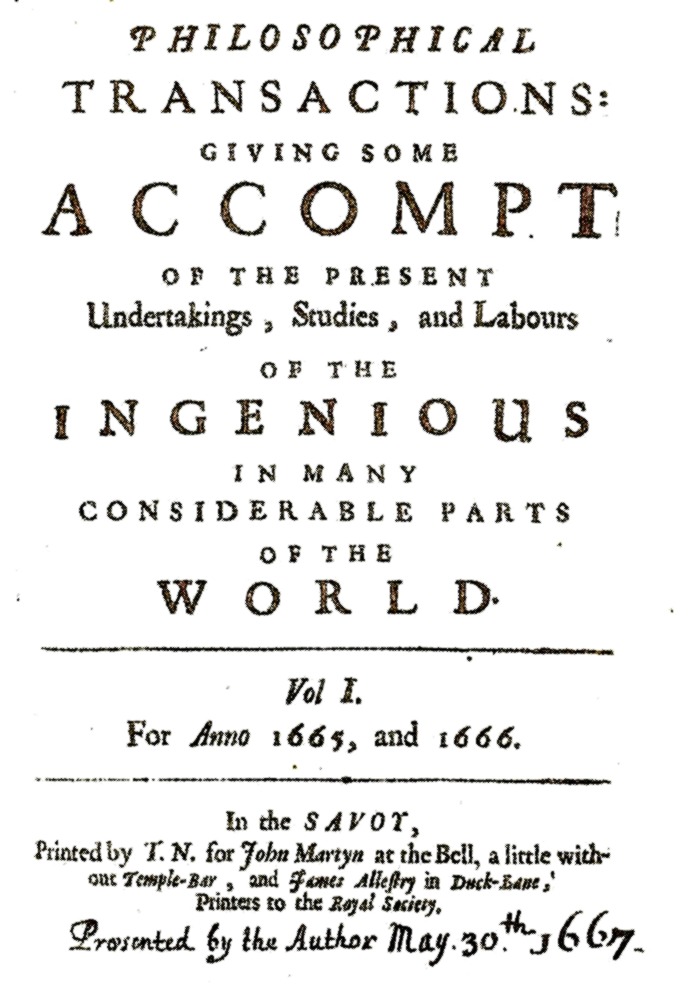
Figure-1B: Philosophical Transactions (1665-1886)of the Royal Society is a scientific journal published by the Royal Society that was launched on the on 6th of March, 1665
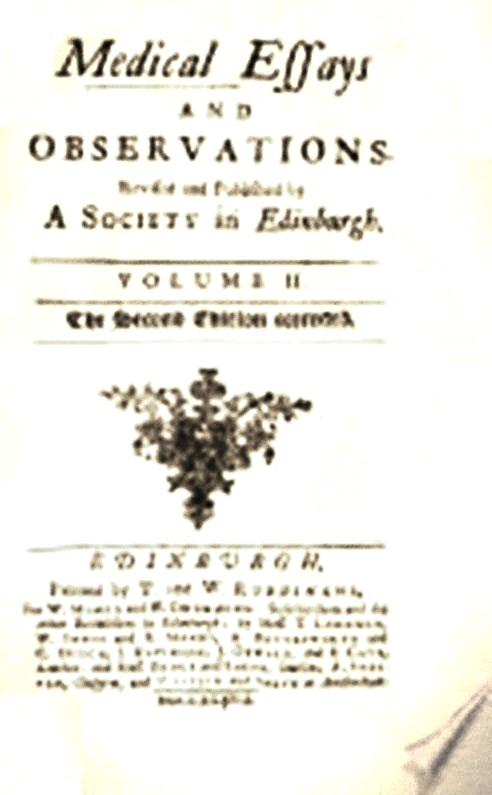
Figure-1C: Medical Essays and Observations was the first scientific medical journal and it was first published in 1731 in Edinburgh
Over a thousand, mostly short-lived scientific journals were founded in the 18th century, and the number has increased rapidly after that.
The standards that a journal uses to determine publication can vary widely. Some scientific journals, such as Nature, and Science, are more keen on publishing articles that mark an original breakthrough in their particular fields. It is also common for journals to have a regional focus, specializing in publishing papers from a particular country or other geographic region, like “The New Iraqi Journal of Medicine” [1-6].
Articles published in scientific journals are highly technical, representing the latest theoretical research and experimental results in the field of science covered by the journal. They are mostly understandable only to researchers in the field and advanced students. Scientific journals require authors to adhere to scrupulous rules of scientific writing. However; these rules may vary from journal to journal, and between different publishers. The formats of scientific journal articles vary, but many scientific journals including medical journals adopt the IMRAD pattern which was recommended by the International Committee of Medical Journal Editors (ICMJE). Articles prepared according to IMRAD include six main parts [1,7]:
1-Abstract is a few paragraphs summary of the paper.
2-Introduction describes the background for the research including a discussion of previous relevant research.
3-Materials and methods give details of how the research was made.
4-Results describe the outcome of the research.
5-Discussion describes the implications of the research.
6-A conclusion which usually describes avenues for further exploration.
Peer Reviewed Medical Journals
Peer reviewed medical journals are established with main aim of publishing scientific reliable articles that accurately reflect current medical knowledge and add additional information to the available medical information.
Peer review is the evaluation of scientific work by one or more professional of similar competence to the producers of the work (peers). It constitutes a form of self-regulation by qualified members of a profession within the relevant field. Peer review methods are employed to maintain standards of quality, improve performance, and provide credibility of published materials. Therefore, peer review is used in medical journals to determine whether a paper is suitable for publication or not. Scientific peer review (also called refereeing) is the process of subjecting an author's scientific work, or research to the examination of others who are experts in the same field, before publication of paper describing the work or research. The work may be accepted, considered acceptable with revisions, or rejected. Peer review requires a panel of experts (reviewers/referees) in a given (and often narrowly defined) field, who are well-qualified and able to perform fair and neutral review. Objective review in broad or interdisciplinary fields can be difficult task; and the significance (good or bad) of an idea may never be widely appreciated among its colleagues.
Pre-publication peer review was probably first practiced in 1731 by the Royal Society of Edinburg as they appointed members to review papers and scientific materials submitted to the society for publication. William Whewell (Figure-2), a professor and philosopher of science, is considered one of the most influential pioneers of peer review,

Figure-2: William Whewell (May, 24 1794-March, 6. 1866) was well known for coining the term "Scientist" in 1833
During the early 1800s, scientific journals' editors were making publishing decisions based on their opinion and authority, probably after consulting professionals they trust. Papers submitted to a scientific society or academy for publication were evaluated by a committee of eminent persons who vote to determine the suitability of a paper for publication. William Whewell, in 1831, suggested that the Royal Society of London commission reports on all papers received for publication in the semi-annual Philosophical Transactions. William Whewell thought that authors would be thankful to learn that their papers would be read carefully by two or three professionals.
Types of articles published in peer reviewed medical journals include original research ranging from large studies to individual case reports, reviews, editorials, book reviews, letters to the editor and other forms of commentary or correspondence, biographies, and eulogies. Medical journals use reviews and meta-analyses to provide general perspective of a topic that is easier to understand.
In general peer reviewed medical contain two major types of sources:
1-Primary publications are research papers that describe original experiments or new research for the first time. Research articles normally contain secondary sources usually in the under the headings “Introduction” and Discussion.
2-Secondary publications include review articles that summarize and integrate a topic of research into an overall view. Reviews are generally divided into two categories:
A-General narrative reviews of a topic by an expert in the field. They are generally aiming at providing a general summary of a topic based on a survey and analysis of the available literature. Such reviews typically do not contain primary research, but can make interpretations and draw conclusions from primary sources.
B-Sophisticated types of review ‘Systematic reviews’ use advanced methodology to select primary (or sometimes secondary) studies meetingcertain criteria to address a particular clinical question in as balanced(unbiased) way as possible.
Systematic reviews may include statistical meta-analysis combining the results of several clinical trials to present stronger quantitative evidence. Systematic reviews and meta-analyses are helpful in synthesizing solid clinical evidence which can be used to establish medical guideline. Systematic reviews are considered more reliable and accurate and less prone to bias than narrative reviews. However, in most instances a narrative review gives a panorama of current knowledge on a particular topic, while a systematic review tends to have a narrower focus [7,8].
Medical Journals and The Role of Editors
Research has become an important industry, which contributes enormously in the development of different aspects of the community. Countries that do not invest on research become extremely dependent on others. Medical research is no exception. Medical journals are an important element in health care systems. They provide an opportunity for spreading of research findings and evidence to improve both patient care and health systems in general. The past decades witnessed extensive changes in the field of medical journals. There have been rapid advances in science and explosion in medical knowledge. The changes in the field of research in general, and the shift in global focus from “health research” to “research for health” had a great impact on medical journals. There has been more recognition of the important role of medical journals in reporting research, advancing patient management and care, educating health professionals, and help to facilitate the exchange of ideas between researchers and policy-makers. Information delivery and knowledge sharing have been revolutionized by computer technology and electronic media. However, the role of editors has not changed much. They still have important role in directing a journal on its course and selecting content that best meets the needs of the journal community. How editors achieve these goals while maintaining high standards and controlling quality will continue to be subjected to increasing challenges. Many medical journals in the world are published in setting where the resources and infrastructure available for research are low, and the setting is not very convenient for publishing a medical journal because of the lack of “research culture”. In most countries in the world academics are expected to conduct research in order to get promoted. Editors therefore feel under pressure to publish what they may sometimes consider poor quality research while at the same time wishing to improve the overall quality of the journal and increase the number of its readers. These competing goals sometimes mean that editors are unsure of their role and what they can do to address the situation, particularly if they are newly appointed. Facing this challenge and to avoid publishing poor quality papers when restricting submission to the journal country, Aamir Jalal Al-Mosawi (Figure-3A), the founding editor of "The New Iraqi Journal of Medicine", the first Iraqi medical journal to be included in Scopus, Al-Mosawi encouraged submission of manuscripts from all the countries in the world by adhering to internationally accepted standards. Thereafter, Aamir Jalal Al-Mosawi was successful in changing the journal he founded from a national journal (Figure-3B) to an international journal (Figure-3C) that published articles from authors from many countries in the world.

Figure-3A: Aamir Jalal Al-Mosawi, the founding editor and editor-in-chief of "The New Iraqi Journal of Medicine", the first Iraqi medical journal to be included in Scopus
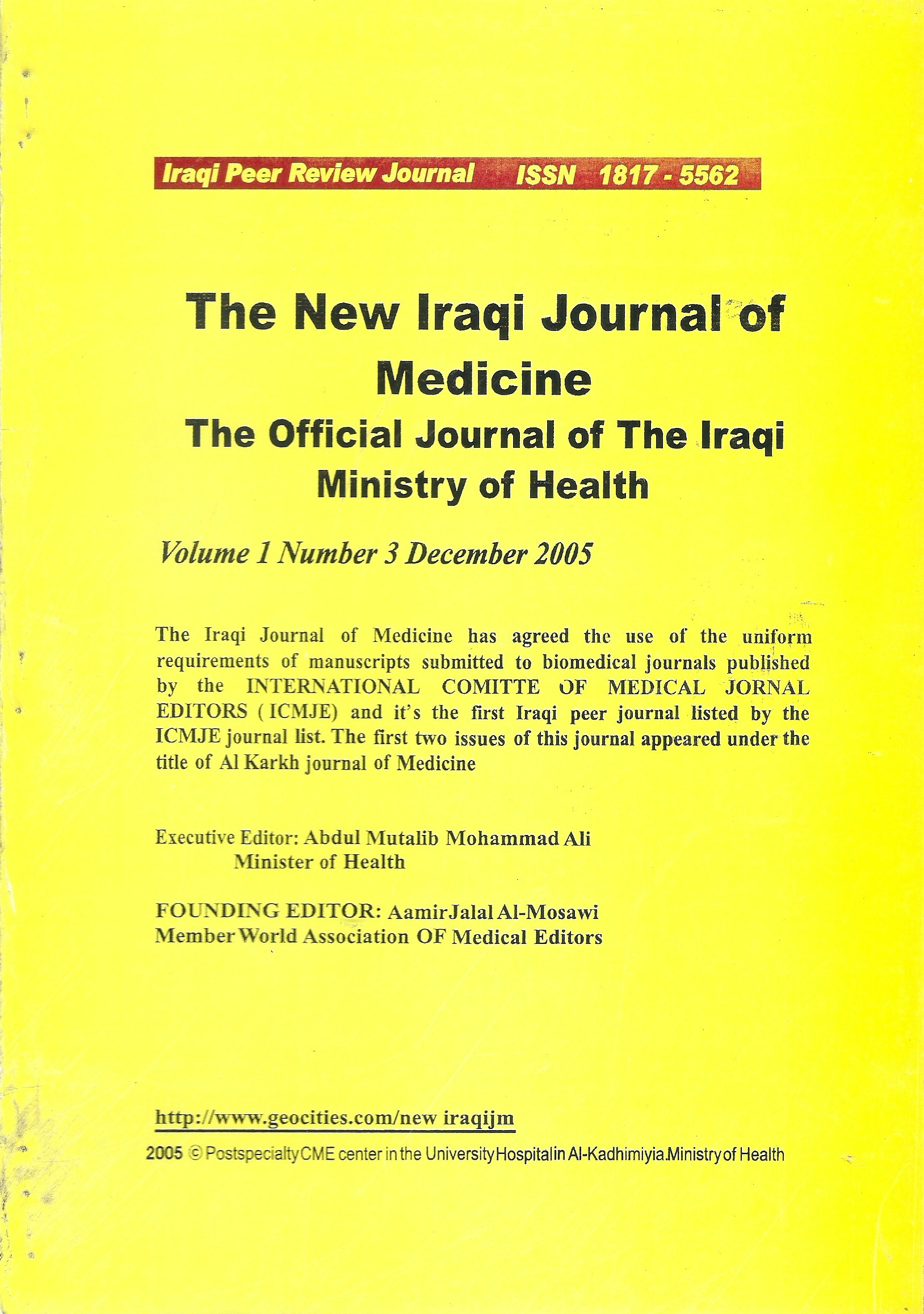
Figure-3B: Aamir Jalal Al-Mosawi initially established the journal as a national journal
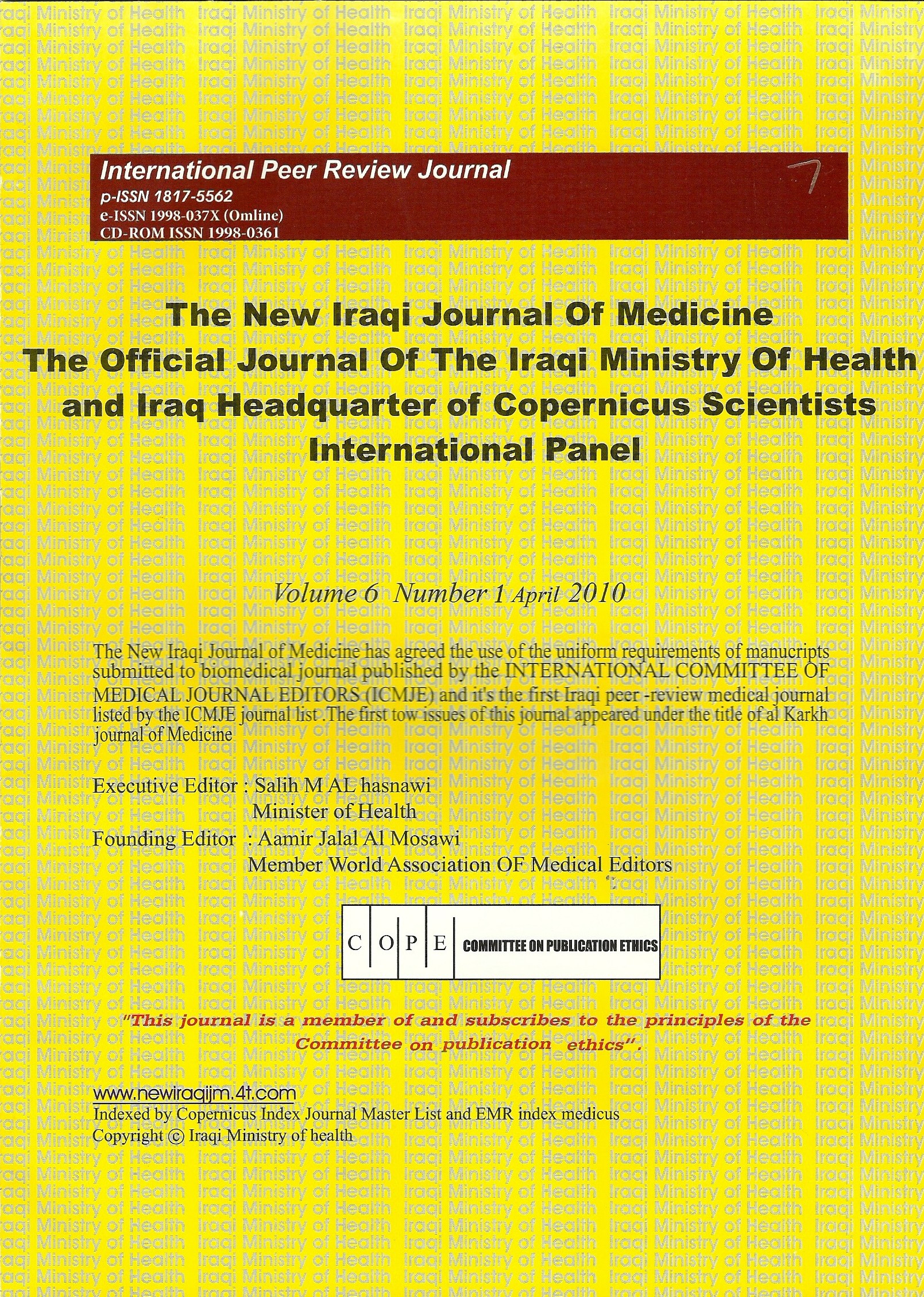
Figure-3C: Aamir Jalal Al-Mosawi initially established the journal as a national journal
The role of the editor includes a wide range of functions which are increased in small local journals with inadequate and imperfect resources. The editor is the journal editorial leader.
An editor must have a clear vision of the aim and goals of the journal, and of the journal society. The vision for a medical journal reflects why the journal is being publishing, how it will present itself to the target audience, and what the journal wishes to attain. Setting the important elements of medical journal editorship including aims and scope, manuscript source, structure and format) will ultimately contributes to establishing a clear journal vision. The editor needs to set a line between accountability to the owners of the journal and accountability to its community, the interests of which may not always coincide. It is therefore imperative that the editor is independent, both in letter and in spirit, in order to be able to implement the journal’s vision. The editor is the editorial decision-maker with regard to journal content, on issues of concern, and on direction. The editor may also be a manager of finance, process and people. Many experts consider education to be an important component of their role [9-15].
Medical Journal Scope and Structure
Medical journals must have a clear idea of why they are being published. Medical journals mission is usually presented as their “aims and scope”. It is of crucial importance that a medical journal clearly expresses its aims and the scope of what they publish. People involved with the publication of a medical journal (readers, authors, editors and owners) need a clear guidance about the journal content, and why they are publishing it. However, it is useful and probably necessary to re-consider the aims and scope of an existing journal at regular intervals. Revision of the aims and scope is required also when there are changes in submission method, editorial board, or the journal discipline. Revision of the aims and scope may also help in the development of more detailed description for use by members of the editorial board and reviewers, in order to facilitate making decisions about what content to papers and accept [1].
Medical Journal Primary Audience
It is of crucial importance to determine the primary audience of a medical journal is it the readers or the authors. The main aim of some medical journals is to provide a certain community of readers with material. Other medical journals aims primarily at providing a publishing outlet for a certain community of authors. Ultimately the aims of any medical journal is to both publish and be read, but being able to identify the prime audience can assist the editors and publisher to make decisions regarding the scope of the journal and the delivery methodologies. If the journal’s aim is to provide information to general physicians, then the best publishing model may be a journal including reviews of new protocols and research. On the other hand, if the journal’s aim is to make national research more widely known and visible, then the best publishing model may be a journal publishing original research articles, and ideally published online in English. In order to develop the aims and scope, editors and owners need to consider the following issues [7]:
1-The main reason for publishing medical journals. It is important to determine why the community needs publishing a medical journal. It is important for medical journal to declare a specific aims and not to declare a general aim such as to “improve health care”. Specific aims help to establish a separate identity from that of other existing medical journals.
2-The target audience of the journal.
3-Topic coverage: what is the journal publishing?
4-Types of articles: how should the journal present its content?
Medical Journal Policies
Medical journals must have established principles and policies which guide their editorial processes and ensure reliability and consistency in decision making. It is also important to regularly re-revaluate the journal’s policies, to ensure that they continue to contribute to the journal’s goals and vision. Setting up policies helps the journal editorial and management team to make the right decisions regarding how the journal will react to challenges and changes, and how it will keep its identity over time. Establishing editorial policies to ensure that the journal performs its role may require inviting appropriate professionals and experts to join the editorial board. Table-1 summarizes the most prominent items in medial journals that require specific policies to be achieved satisfactorily [1,11,12,13,14].
Table-1: The most prominent items in medial journals that require specific policies |
1-Aims and scope. 2- Process of decision-making. 3-Peer review and article acceptance. 4-Editing and peer review of non-article material e.g., editorials and letters 5-Appeals/conflicts. 6-Authorship and contributorship. 7-Ethical issues: Fraud, plagiarism, duplicate submission, redundant publication. 8-Conflict of interest. 9-Financial: Journal funding, advertising, journal pricing. 10-Copyright and other legal issues. 11-Distribution models, including free distribution, such as open access online publishing. 12-The structure of the journal and the editorial team. 13-Roles of editors, editorial board and journal executives. 14-Dialogue between the research community and policy-makers. |
Journal Structure, Design and Format
The appropriate and convenient format for publishing a medical journal needs to be determined. Journals can be published in printed form only, in both print and electronic forms including CD-Rom versions, or in electronic form only. In some countries the purely electronic journals are not considered a reputable journal. However, this is changing and it is becoming more acceptable for new journals to publish in electronic form only. Many medical journal indexes have recently changed their policies and are accepting the indexation of purely electronic journals as long as they adhere to the other acceptance criteria. The journal structure is the organization of articles and other content so that readers can easily find what they want to read within the journal. In a print version of a medical journal the structure can be very simple consisting of table of contents followed by articles. Many journals try to group articles thematically. In online version of medical journals, the structure can be more complex. Several issues can be presented as links in one page. Many online journals make the references used by research articles accessible via a link.
When a journal is published in both print and online formats, the situation becomes more complicated. The format of online version of a journal may differ from the print version. It is common that some illustrations may be published in color online, but only black-and-white in print. Some medical journals include some content in only the print, or only the electronic version. Publishing online and print editions of a medical journal requires ISSNs for each version. An e-ISSN for the online and a p-ISSN for the print version. CD-ISSN should be obtained for journals that are published in the CD format. There are also some options for online journals to be more creative and present the journal content in more innovative ways [9, 14]. Table-3 shows structuring and content presentation options that are unique for online medical journals.
Table-3: The structuring and content presentation options that are unique for online journals |
1-Uploading pre-press accepted articles. 2- Publishing articles online as soon as they are ready. 3- Grouping articles in one subject area, 4- Offering some contents in other media, such as podcasts, and videos. 5-Creating online articles discussion forums. 6-Offering online supplementary material that can be researchers. 7- Offering interactive CME articles to test reader’s knowledge. |
Medical Journal Leadership and Ownership
The editor (editor-in chief) is usually responsible for medical journal leadership. The leadership structure of medical journals is variable, but generally includes editorial board, owner (executives), and publisher. The editor is expected to provide guidance for the editorial board and the journal owner and the executives appointed by the owner on the most appropriate distribution of roles and responsibilities to ensure success of the journal.
Determining precisely the roles and responsibilities of all collaborators is mandatory to avoid conflict and ensure the success of a journal. Clearly defining the organization of the journal in detail and clarifying the roles and responsibilities of the editor and all the collaborators is necessary for the proper functioning of any medical journal. The editor is expected to give guidance to the owner and editorial board on the outlines of their interaction and to what extent the editorial board is involved in editorial decisions. These issues must be included in the editor’s contract. The contract of any editor of medical journal should clearly confirm the editor’s independence in all editorial decisions [1,7].
The Editorial Board
The editorial board generally shares journal leadership to some extent and help in providing the guidance for a medical journal. The editorial board works with the editor to achieve the short-term and long-term goals of the journal and to ensure that the journal adheres to the aims and scope statement as possible. Editorial boards assume different roles and responsibilities in different journals, ranging from those of an advisory board that meets only occasionally, to those of a functional decision-making body that works closely with the editor and assists with the daily activities of the Journal. This group may have another name such as “board of editors”, “editorial committee”, “advisory editors”, etc. The size of the editorial board is variable and depends on the size and the scope of the journal [1,7].
Journal Owners
The owner of the journal may be a professional association, a commercial company, department (Ministry) of health or government department. In many journals the owner is represented by “Executive editor” who may be the president, secretary general of a professional association or the minister of health. The owner may be responsible for the overall financial success of the journal, and may also have the interest to ensure that the journal serves its membership and policies. It is very important that the relationship between the editors and the owners is transparent, and that each knows exactly what is expected of the other. The editor is commonly appointed or employed by the owner, and therefore is expected to have a contract that clearly states what the owner expects of the editor such as the frequency of publication, and number of pages in each issue. However, the editor should be free and independent to make decisions regarding the editorial content of the journal [1,7].
Publisher
The owner of many journals is often the publisher. However, many non-publisher journal owners (e.g., professional association or the ministry or department of health) make a contract with a commercial publisher. In many journals the publisher works in partnership with the journal owner. The publisher may have different priorities to that of the owner or the editor. Therefore, it is important for the editor determine what expectations the publisher has of its role. The publisher is commonly involved in as delivery schedules and decision-making over journal design and lay-out, and promoting the journal [1,7].
Medical Journal Stakeholders
Medical journal stakeholders include all the people and professionals involved with publication of the journal. Table-4 shows the main ordinary stakeholders of a medical journal. The editor in chief of a medical journal should determine the appropriate ways of effective interaction with and between all the stakeholders especially the editorial team, authors, reviewers and readers [7,9].
Table-4: Ordinary stakeholders of a medical journal |
1-JOURNAL OWNERS AND THEIR EXECUTIVES Professional societies Department or ministry of health 2-PUBLISHER 3-EDITORIAL TEAM Scientific editorial team Editor-in-chief Editors (Assistant and associate) Editorial board Management editorial team Managing editor Editorial staff 4-REVIEWERS External Internal: members of the editorial board 5-AUTHORS 6-READERS National and international organization Department or ministry of health National medical societies Medical colleges World Health organization International and regional societies Researchers Ordinary readers (Readers for knowledge) 7-Pharmaceutical companies and conference organizers |
Editor-In-Chief/Editor
The editor is the scientific leader of the journal. He/she gives guidance and direction for the journal and is responsible for building a strong management team. The editor must make a balance between the interests of all the stakeholders; readers, authors, staff, owners, editorial board members, advertisers and the media. As the editor is almost totally responsible for the content of the journal, he or she is expected in the ideal setting to have special attributes. Table-5 summarizes the ideal attributes of a medical journal editor. Table-6 summarizes the main roles and responsibilities of the editor [9,11,12,14].
Table-5: The ideal attributes of a medical journal editor |
1-A well-qualified physician. 2-A competent researcher. 3- Well respected within his/her field. 4-Has extensive experience in the process of reviewing manuscripts and editorial duties. 5-Has personal expertise and knowledge of the journal’s subject. 6-Has extensive experience as an author. 7-Has understanding of scientific methodology and critical analysis skills. 8-Has excellent leadership and communication skills. |
Table-6: The main roles and responsibilities of the editor |
1- Responsible for all the content of the medical journal. 2-Make the final manuscript acceptance decision. 3-Maintain editorial independence. 4-Manage the editorial office and ensure good working routines. 5-Establish, maintain, and review the journal’s policies usually in cooperation with members of editorial board. 6-Ensure that the editorial processes are transparent to stakeholders. 7-Attract authors to submit high quality manuscripts to the journal. 8-Represent the journal in national, regional and international meetings. |
Associate Editors/Assistant Editor
Associate editors are the members of the editorial board who assist the editor in conducting the editorial duties. The journal editor can delegate certain duties to the associate editors. Associate editors are usually appointed by the editor or elected by the editorial board, and not usually by the owner. In journals that are owned by a professional association, the owner may sometimes suggest that specified members of the association join the editorial board or appointed as associate editors. Associate editors are usually well-qualified physicians with extensive experience in publishing medical journals. Ideally, associate editors have attributes that are similar to the attributes of the editor, table-5. Associate editors usually work closely with the editor supporting him/her in maintaining the quality of the journal and contribute in making difficult decisions such as complicated ethical problems. In some journals, associate editors are specialists that have extensive experience in one particular field of the journal. In such case the editor can delegate the associate editor to take total responsibility for that field. Table -7 summarizes some of the roles of associate editor of a medical journal.
Assistant editors are usually less senior members of the editorial team who assist the editor in performing some editorial duties that generally demand less scientific and academic qualifications and expertise. The editor can also delegate some editorial duties to the assistant editor. Assistant editor is usually appointed by the editor or elected by the editorial board, but sometimes appointed by the owner. Assistant editors need more experience in managing an editorial office than academic and scientific experiences. They also have to be good at dealing with authors and reviewers [7,9].
Table-7: The main roles of medical journal associate editor |
1-Help the editor in executing the policies of the journal and monitoring the efficiency of its systems and maintenance. 2-Responsible for a part of the journal correspondence and work with authors and reviewers. 3-Help in the revision of papers. 4- Provides recommendations regarding acceptance or rejection for submitted manuscripts in his/her specialist area. 5-Supporting the editor in maintaining the quality of the journal. 6-Contribute in making difficult decisions such as complicated ethical problems. 7-Delegate by the editor to take total responsibility his/her field of specialty or expertise. |
An assistant editor should have a general understanding of the subject area of the journal, but they do not need to be specialists in the area. Some small journals don’t appoint assistant editor and its duties are undertaken by an administrator or secretary. Table-8 summarizes some of the roles of assistant editor of a medical journal. Some journals don’t have assistant editor but have managing editor that performs most of the duties of assistant editor [7,9].
Table-8: The main roles and duties of medical journal assistant editor |
1-Managing the administration of the editorial office. 2- Help the editor in putting into practice the journal policies. 3-Perform part of the correspondence and communications with authors, editorial board members and reviewers. 4-Manage and maintain the manuscript tracking system. 5-Maintain records and produce reports of manuscripts received, accepted, rejected. 6-Communicate decisions to authors and deal with inquiries. |
Editorial Boards and Advisory Boards
The editorial board is a scientific committee that is generally not directly involved with the management of the journal. They give the editor advice, opinion and recommendations about the scope and content of the journal.
The editorial board may have different forms in different journals. In some medical journals the editorial board plays to a large extent the role of internal reviewers panel, which provide advice and opinion to the journal editor. They also endorse the changes suggested by the editor, and give advice about changes in discipline and give thoughts and proposals for future contents. Many international journals have large editorial boards with members from different continents in the world. Table-9 summarizes some of the roles and duties of medical journal editorial board. Members of the editorial boards are usually appointed by the editor. In some journals the role of the editorial board may be asked to approve new members in the editorial board and team, elect the chief and executive editors in consultation with the owners, and contribute to decisions affect the function of the journal. They may also contribute to making policy decisions. The board may als0 be responsible for coping with goals of the sponsoring organization. Board members are usually appointed by the owners upon the editor’s advice. In all circumstances the editorial board members should be highly qualified and well-known professionals, or scholars with a solid research background. By joining the editorial board they endorse the journal based on the quality of the content. Ideally editorial board members should have varied interests and expertise. The size of the board depends on the size and scope of the journal. Many journals limit the service of the editorial board members to 4-5 years to help in getting new ideas and innovations. Ideally, the editorial board should meet regularly to discuss the future of the journal [9,11,14,15].
Table-9: The main roles and duties of the editorial board |
1-Endorsement and approval of the content, scope, and structure of the journal. 2- Support the editor by giving the necessary opinion, advice, and Recommendations. 3-Help the journal by working as reviewers or suggest reviewers. 4-Help the editor in solving any problems that might face the journal. 5- Play part in writing of editorials and invited articles. 6-Solicit manuscripts for the journal. 7-Help in making policy decisions approve the journal’s by-laws, and maintaining journal policies. 8-Help in decision-making when reviewers’ opinions on submitted manuscripts are not controversial. |
Technical Editors, Language Editors and Copy Editors
Some medical journals appoint technical, language and copy editors to ensure that the accepted papers have good style and easily readable. These editors have the responsibility of ensuring that the journal articles are presented in a consistent, readable and accurate manner. Technical, language and copy editing are commonly not specialized journal discipline. Therefore, in some medical journals, the assistant or managing editor perform technical, language and copy editing.
Technical editing includes revision for clarity and proper organizations of figures and tables. Many journals do not employ technical editors, and rely on the reviewers and editors to provide this type of editing and revision.
Copy editors are expected to ensure that the style is correct and consistent and matches the journal’s style, and that the article is complete and used references correctly. A copy editor is also usually required to check the page proofs, to ensure that no errors have been introduced during the production processes. They need good communication skills to be able to deal delicately and directly with authors on behalf of the journal. There is overlap between the roles of technical editors, language editors and copy editors, and many journals appoint one person to perform all these roles. Some medical journals depend on members of the editorial team to perform these roles. Table-10 summarizes some of the functions of technical, language and copy editing. In many circumstances journal reviewers and other editors contribute to some extent to technical, language or copy editing.
Reviewers and editors sometimes work closely with authors when an article requires a lot of corrections. Common technical defects of an article include a text citation that does not appear in the list of references, inaccurate references and poorly written paragraphs. In many small journals many of the tasks of copy editing have to be done the authors themselves. This usually results in lower quality presentation and may not solve some problems of readability, precision and uniformity [1,7,9].
Table -10: Functions of technical, language and copy editing. |
1-Make sure that the published articles are coherent, and written with precision. 2-Make sure that the structure for each section of the journal is written according to instructions. 3-Help in improving the presentation and the writing style to ensure that the text is easy to read and understand. 4-Remove any redundancy in the articles. 5-Make sure that tables and figures are properly used and are correctly cited in the text and displayed correct information. 6-Make sure that the references are not very outdated. 7-Make sure that all cross-references are accurate and that all bibliographic citations match the reference list. 8-Make that the article is complete with the author affiliation, addresses, and other contact information. 9-Prepare the manuscript or proof for printing. |
Journal's Authors, Reviwers and Readers
Authors are very important stakeholders of any medical journal and important factor in the sustainability and success of any medical journal. Therefore, medical journal should make significant efforts in improving their services to the authors including efficient manuscript processing, short time from submission to decision and short time from acceptance to publication.
In addition, communication with authors should be highly professional, courteous and trustworthy. The editor and the editorial office have a responsibility to respond as soon as possible to author’s contact [1]. Table-11 summarizes the important characteristics of the relationship and communications between medical journals and their authors.
Table-11: The characteristics of the relationship and communications between medical journals and their authors |
1-High ethical standards including confidentiality and swift and courteous and respectful responses to author’s contacts. 2-Adequate adherence to punctuality, professionalism. 3- Satisfactory attention details and intelligibility. 4-Medical journals should be keen on receiving and inviting author’s feedback. 5-Medical journals should regularly evaluate their communications patterns. 6-Medical journals should be keen on promptly solving any dispute with authors, and have documented evidence for their decisions. |
Supporting the less experienced authors in writing articles is very important especially for the recently launched medical journals. This support will help the journal to broaden their audience and make them less dependent on highly experienced authors who are expected to be less in number. Some journals offer training for authors and potential authors on scientific writing by conducting workshops for example. Many journals encourage reviewers should be encouraged to given authors constructive commentaries that help them improve their articles. This is expected to raise the value of the journal from the author’s point of view [1].
Journal's Reviewers
Reviewers are advice-givers to authors and editors on the quality of the manuscript. They are external manuscripts evaluators chosen by editors to give written commentaries that help the editor to decisions regarding the acceptance of the submitted manuscripts. Reviewers also give authors advices about how to improve their manuscripts. The purpose of the peer review process is to ensure precision and scrupulousness of any article before publication.
Medical journals have to give reviewers all the information they need, when asking them and when asking them to review manuscript. Journals need to follow a skilled communication guideline when approaching any reviewer. It may be very useful to send reviewers initially the title and abstract of the article and the deadline for returning the review. Some journals also ask the reviewers to write editorial commentaries to be published with articles when necessary and when there are specific reasons and justification to do that [7]. Table-12 summarizes some of the principle need to be followed by medical journal to facilitate the review process.
Table-12: Some of the basic principles of manuscript review process |
1-Publish (in every issue or in the first printed issue of each year) “Instruction for authors” that include an account of the review process and policies in the and make them available on journal web site. 2-Choose well-qualified doctors and health professionals to join the journal reviewer panel. 3-Send reviewers manuscripts within their field and areas of expertise. 4-It is a good practice to update reviewers with the final decision made on manuscripts they reviewed. |
Readers
Many medical journals are depending on selling the journal to the readers to sustain their financial support. Such journals have to determine what their target and potential readers' demands. Such journals need to make that the nature of the content is appropriate for the readership and presented in acceptable ways. Considering reader’s opinion is important for journal development, and this can be achieved by encouraging letters to be submitted, and conducting readership survey [1].
Medical Journal Management
It is important for the founding editor(s) of a medical journal to establish a management system and administrative body consisting of enough editors and editorial staff to enable the publication of a sustainable medical journal. Important elements of journal management include planning for the financial support, staff recruitment and training. Table-13 summarizes the important elements of medical journal management [7,9].
Table-13: The important elements of medical journal management |
Financial management 1-Managing the financial resources of the journal which may include the revenues expected coming from (Subscriptions, advertising, support from sponsoring organizations). 2-Managing expenditures to avoid excessive spending. 3-Allocating money for improvements and developments. Human resource management including recruitment of editors and editorial staff including: 1-Administrative support (secretarial/clerical). 2-Language/copy editor. 3-Technical editor. 4-Graphic designer or illustrator. 5-Publishing technician. 6-Computer technician Procurement of hardware, software and other equipments Establishing sources of high-quality articles to publish Promotion of the journal Journal distribution Performing regular SWOT analysis (strengths, weaknesses, opportunities and threats) for the journal which help in 1-Identifying areas for improvement. 2-Taking the advantages of new opportunities. 3-Addressing problems and finding solutions for them. Managing of the publication process (editorial office operations) 1-Management of submitted manuscripts and other documents/ 2-Storing and accessing information/ 3-Monitoring and evaluation of the publication processes. |
Swot Analysis
SWOT analysis (strengths, weaknesses, opportunities and threats) is an analytic management tool that can be used by medical journals to help in developing the journal and sustain it.
Editors have to analyze their journals attribute (Resources, capabilities, processes, regulation, competition, and environment) to be able to take any competitive advantage and establish a strategy for managing the journal. Editors can discuss their analysis with the editorial board during the editorial board meeting. A possible SWOT analysis of a medical journal includes [9,16]:
Strengths (Capitalize):
1-Renowned editors (attract authors).
2-No competitive journal in the country.
3-Stable financial supports.
Weakness (Shore-up)
1-Poor quality of submitted manuscripts.
2-Few reviewers.
Opportunities (Invest)
Online submission system
Threats (Identify)
Loss of experienced staff.
Editorial Office Processes
Editorial office processes include three major categories: routine office work and correspondence, manuscript management and production. Some of these activities can be performed out of office. However, the task of final supervision and quality control is usually performed by the office team, which is in turn supervised by the editor and the managing editor. Manuscripts management starts with the reception of manuscripts. Receiving manuscripts on paper was common before the emergence of the internet. Some medical journals were receiving manuscripts on paper and floppy disc or CD-ROM. Receiving manuscripts by email and through online submission systems have become increasingly popular. Receiving manuscripts through the internet is much easier and faster. In addition, electronic manuscripts are easier review and can be handled easily during the production processes. Table-14 summarizes the important steps in manuscript management. Efficient communication between the journal, authors and reviewers is very important aspect of manuscript management [1,7,9].
Table-14: Steps in manuscript management |
1-Submission of manuscripts through e-mail or online submission system. 2-Manuscript registration with a number. 3-Assistant or managing editor checks that the manuscript is relevant to the field of the journal and written according to journal instructions. It is important to check the followings: a- Completeness of the manuscript: all pages, figures and tables are included. b-The journal style has been followed. c-The title page includes all necessary information (article title, authors’ names and affiliations, and address for correspondence). d-The abstract is of the correct length and key words listed. 4-Editor-in-chief receives the manuscripts. Editor-in-chief may assign the manuscripts to one of the journal editors for further management. 5-Manuscript usually sent to reviewers (usually two or more) by the assistant or managing editor under the supervision of one of the editors. 6-Reviewer’s comments received usually before the deadline determined by the journal. 7-Decision made by editor: Acceptance without revision, revision is required or rejection. 8-Manuscripts required revision will be sent back for authors and resubmitted. 9-After revision and second submission, the editor make the decision (Acceptance without revision, second revision is required or rejection) with or without sending the manuscripts for reviewers again. 10- Accepted manuscripts pass to the production process. |
Ideally the journal creates several correspondence templates for each purpose to facilitate writing the appropriate letter in time. Correspondence templates may include [1,7,9]:
1-Confirmation of submission and receipt of manuscript (first submission or revised manuscript), to authors;
2-Review request to reviewers which should include deadline and preferably reviewing instructions.
3-Request for revision, to authors
4-Decision letters (rejection, acceptance, and conditional acceptance) to authors.
5-Request to authors for explanation about copyright, ethical/institutional review board approval, authorship etc.
6-Feedback to reviewers.
Journal Promotion
Promotion of the journal and enhancing its visibility is an important element of medical journal management. Medical journals need to promote itself not only for readers and authors, but also for reviewers as shortage of reviewers can create serious problems for medical journals. The key in promoting the journals to authors is giving high quality service. A good author service start by providing satisfactory, clear, and concise instruction for authors and expressing the journal willingness to take an active role in helping the authors to produce good quality articles. A well trained professional journal staff is crucial to provide high quality author service. High quality author services include efficient editorial process and manuscript management that associated with rapid decision and early publication following acceptance. User-friendly online submission and tracking system can be very important tool in promoting the journal for both authors and reviewers. Promoting the journals to readers is easier with online versions and needs effective distribution of the print version and libraries availability. Indexation and listing in bibliographic databases can attract authors, readers, and reviewers. E-mailing potential readers with information about the latest issue and providing e-mail table-of-contents alerts are commonly practiced by medical journals to promote themselves to the readers [9,11,12].
Medical Journals Publishing Models
In addition to the original print publishing models, electronic publishing models have emerged following the wide spread use of the internet. However, many medical journals are printed and published electronically, usually online on the same time. Publishing and distributing medical journals on CD-Rom is a relatively uncommon variant of online publishing models. Few medical journals such as “The New Iraqi Journals of Medicine” are published in three versions and have three ISSN numbers. For example, the p-ISSN number of “The New Iraqi Journals of Medicine” is 1817-5562, the e-ISSN number of “The New Iraqi Journals of Medicine” is 1998-037X (online), and the CD-Rom-ISSN number of “The New Iraqi Journals of Medicine” is 1998-0361.
Currently there are three main publication models used by online medical journals open access, subscription-based online and hybrid publication model.
Subscription-based model is common in commercially published journals in developed countries. This publishing model allows access to authorized users (subscribers, and other users, such as members of the editorial board). A pay-per-view option to purchase access to individual online articles using credit cards can be offered. Medical journals published with this model are generally less visible than open access medical journals.
Open access medical journals offer free articles online that are accessible to every one. Such journals don’t depend on subscription revenue for funding. Many open access journals charge authors publication fees. However, some medical journals depend on a sponsoring organization for funding. For example, “The New Iraqi journal of Medicine” depends on funding on the Iraqi Ministry of Health. The higher visibility of open access journals may play crucial role in enhancing its impact factor and improving its reputation.
Hybrid model of publication is basically subscription-based, but offer free access by to selected articles and to past issues (delayed open access). This model enjoys the advantages of subscription revenue with higher visibility than subscription-based model. Some medical published with the hybrid model offer authors the option to pay a publication fee for making their work available for free for the readers [1,11,14].
Journal's Indexation
Indexation has become an integral part of publishing medical journals as it represents a source of accreditation for the journals. Many academic institutions and universities articles that are not indexed in international, regional or a local index not suitable for academic promotions. An example of international indexes of medical journals is index Copernicus journal master list. Index Medicus for the Eastern Mediterranean Region (IMEMR) (WHO) is a good example of a regional index. All indexes have some minimal requirements for inclusion. Depending on the vision of the indexing service, they may set strict criteria on content including geographical location (like local indexes). Table-15 summarizes the most important and common inclusion criteria used my medical journals indexes [9,11,12,13,14,15].
Manuscript Evaluation: Peer Review
Peer review is now considered an indispensable tool to ensure high quality of medical journal content. Peer review is the evaluation of scientific work by one or more experts of similar competence to the producers of the work (peers). It constitutes a form of self-regulation by qualified members of a profession within the relevant field. Peer review methods are employed to maintain standards of quality, improve performance, and provide credibility of published materials.
Table-15: The most important and common inclusion criteria used my medical journals indexes |
1-Informative journal title. 2-Fully descriptive article titles and abstracts. 3-Address information for authors. 4-Complete bibliographic information for all cited references. 5-Satisfactory instruction for authors. 6-Application of the peer review process. 7-Adherence to ethical guidelines for conduct of research. 8-Production quality and timely publication: quality of the layout, printing, graphics and illustrations. 9-Content: inclusion of emerging topics and validity, importance, originality of published materials and contribution to coverage of the field. 10-Predominance of original and state-of-the-art review articles of the published articles. 11-Language requirements: English article titles, abstracts, and keywords are required by many indexes. 12-Diversity among authors of both source articles and cited articles and diversity of authors’ affiliations. 13-Aminimum number of issues, or a time period between applications. |
<!-- /* Font Definitions */ @font-face {font-family:"Cambria Math"; panose-1:2 4 5 3 5 4 6 3 2 4; mso-font-charset:0; mso-generic-font-family:roman; mso-font-pitch:variable; mso-font-signature:-536869121 1107305727 33554432 0 415 0;} /* Style Definitions */ p.MsoNormal, li.MsoNormal, div.MsoNormal {mso-style-unhide:no; mso-style-qformat:yes; mso-style-parent:""; margin:0in; mso-pagination:widow-orphan; font-size:12.0pt; font-family:"Times New Roman",serif; mso-fareast-font-family:"Times New Roman";} .MsoChpDefault {mso-style-type:export-only; mso-default-props:yes; font-size:10.0pt; mso-ansi-font-size:10.0pt; mso-bidi-font-size:10.0pt;} @page WordSection1 {size:8.5in 11.0in; margin:1.0in 1.0in 1.0in 1.0in; mso-header-margin:.5in; mso-footer-margin:.5in; mso-paper-source:0;} div.WordSection1 {page:WordSection1;} -->
Therefore, peer review is used in medical journals to determine whether a paper is suitable or not for publication. A professional peer-review process was probably first reported in the Ethics of the Physician written by Ishaq bin Ali al-Rahwi (854–931). He stated that a visiting physician must make duplicate notes of a patient's condition on every visit. When the patient was cured or had died, the notes of the physician were examined by a local medical council of other physicians, who would decide whether the treatment had met the required standards of medical care. Scientific peer review can be defined as the evaluation of research findings for competence, significance, and originality by qualified experts. Reviewers are expected to act as sentries on the road of scientific discovery and publication. They try to ensure the quality of scientific information, an action essential to reduce the introduction of misleading scientific material. Although this process is now an integral part scientific publishing, it was not always thought to be necessary. Prior to 1976, journals such as “The Lancet” did not adopt peer review as they considered it unimportant. Journal des Scavans, was probably the first collection of scientific papers. It was established in 1665 by Denis de Sallo. During that time there was no peer review process in place. The goal of the journal was to report the findings of others rather than agree with their results. During the year 1731, the Royal Society of Edinburgh published Medical Essays and Observations, which are considered the first peer-reviewed collection of medical articles. In the first volume, the editor sent the submitted essays for review to individuals he regards them to be “most versed in these matters.” The Royal Society of Edinburgh realized that the process of peer review did not necessarily guarantee that the work was better than non-peer-reviewed publications. The rationale of the journal to use peer review process was to introduce and spread creative and important ideas; a disclaimer was provided stating that peer review did not guarantee truthfulness or accuracy. The submitting authors were responsible for the quality and trueness of their research. The current peer review system was gradually developed from this 18th century process. However, the emergence of this process was associated with some concerns about bias, evenhandedness, useless delay, and general ineffectiveness of the process. Despite these shortcomings, peer review gives an opportunity for authors to measure responses to their work and also gives them the opportunity of correcting and possible errors or flaws before publishing their work. Peer review process pushes authors to adhere to the accepted standards of their discipline and prevents the dissemination of irrelevant findings, unwarranted claims, unacceptable interpretations, and personal views. Publications that have not undergone peer review don’t have much appreciation of scholars and professionals. The process of peer review was evolved gradual and irregularly. Editors of different journals used various methods of peer review. Some editors were sending the submitted manuscripts to their internal reviewer panel, and rarely send manuscripts to external reviewers. The British Medical Journal was sending many manuscripts to external reviewers as early as 1893.During the late 20th century; peer review became an indispensable tool for medical and biomedical journals editorship. The increased specialization within each scientific field gave further endorsement of the indispensability. Currently, most researchers consider peer review as the imprimatur for research articles. The contemporary peer review system has developed from its 18th century sources. However, there was considerable variation in its application. Contemporary peer review process is achieved by systematically evaluating manuscripts by editors and experts (reviewers) with aim of reaching a consensus on the value of submitted manuscripts and agreed on a decision of publication acceptance or rejection. The keystones of this process are the editors and expert reviewers. Editors primarily direct manuscript management and reviewers perform the actual manuscript evaluation. Editors direct the process by determining the appropriate reviewers and communicating with authors and reviewers as well as by making the final decision on publication. Reviewers are chosen depending on their expertise and availability. Editors usually make decisions depending on the needs of the readers and journal priorities. Expert reviewers help in detecting technical and stylistic flaws within the manuscript, determining the novelty of the study, and making a suggestion of acceptance, rejection, or revision. They examine technical attributes as well as scientific quality, clarity of writing, soundness, and scientific strength.
In most medical journals, the peer review process starts internally with review by one of the editors (usually assistant or managing editor) before sending the manuscripts for external reviewers. The initial journal review is necessary to avoid overloading the reviewers with manuscripts that have no chance of being published. The primary aim of this internal journal review is to ensure that the manuscript is intelligible, goes with the journal’s aim and scope, and was written according to the journal instructions to authors.
In this initial review the poor language alone is generally doesn’t preclude further review. However, the scientific content must be comprehensible.
When sending manuscripts most journals adopt the double-blind review model. In this review model the reviewers and the authors don’t know each other’s identity. Few medical journals use open review model such as BioMed Central medical journals, and BMJ. In these journals articles are generally published if authors get three positive reviews from the editorial board. Most medical journals create a reviewer panel based on certain criteria for the selection of reviewers. The reviewer panel may include members of the editorial board. Most medical journals are now sending manuscripts to reviewers by e-mail or using online submission systems with a reviewing system to evaluate the submitted manuscripts. Table-16 summarizes the important principles of the practice of peer review.
The beneficial effects and advantages of peer review on manuscript quality, was studied Purcell GP and colleagues in 1998. In one study with the aim of quantitatively characterizing changes to manuscripts submitted to the Annals of Internal Medicine, they performed line-by-line comparisons of published articles with the submitted versions. They found that substantive changes to manuscripts occurred in five major categories: too much information, to little information, inaccurate information, misplaced information, and structural problems.
Goodman SN and colleagues (1994) studied articles in the Annals of Internal Medicine; they measured manuscript quality using a 34- question instrument. Forty-four blinded physicians and epidemiologists reviewed the papers using the questionnaire; 97% of questionnaire items indicated improvement after editing and peer review. Four of the thirty-four items showed statistically significant improvement. In this study reviewer’s perception of the overall quality of manuscripts did not change significantly, the objective measures probed by this questionnaire indicated otherwise. This study indicated that the peer review process is effective, the reliability of the 34-question instrument was low, and the study failed to differentiate between the effects of peer review and the effects of copy editing. Weller AC (1996) reported that the majority of authors felt that their manuscript’s quality was improved after peer review. According to Weller AC, authors thought that manuscript content improved 37.2% of the time, organization improved 22.6% of the time, and conclusions were clearer 18.2% of the time.
Despite all peer review process advantages and wide acceptance within the scientific community, shortcomings have been reported. Possible disadvantages and shortcomings of the peer review process include: Prejudice toward some authors, inability to detect major manuscript defects, unnecessary delays in publication, and inability to detect dishonesty and scientific misconduct. The most worrying imperfections in the peer review process are exposed by the increasingly frequent cases highlighting the inability of peer review to uncover and minimize legal and ethical problems. Impressive cases were studied by Cantekin et al. including reviewer bias, reviewer conflict of interest, breach of confidentiality, disclosure of funding sources, intellectual property rights, and the proper venue for publication of unorthodox viewpoints. Despite the reported shortcomings of the process of peer review, it can not be abolished as its benefits significantly outweigh its disadvantages and the loss of the “added value” associated with formal peer review can be enormous.
Table-16: The important principles of the practice of peer review |
1-Most manuscripts are sent to two external reviewers so that balanced feedback can be obtained. 2-Evaluating manuscripts by different experts in different specialties and different geographic regions should be considered. 3-Manuscripts submitted as original articles may need evaluation by a biostatistician to assess the methodology and statistical analyses. 4-Provide reviewers with “Review guidelines” to facilitate the comparison of reviews by different authors. 5-Rate reviewers according to adherence to deadlines, ease of communication, depth of the review, understandable and helpful instructive comments, positive attitude toward authors, keenness to cooperate, professionalism and impartiality. 6-Don’t overload good reviewers: Ideally, a maximum of four manuscripts per year is evaluated by one reviewer each year. 7-Consider creating incentives for the reviewers, such as a free subscription to the journal. 8-Keep searching suitable databases for new reviewers in various journals' fields and consider asking the authors and members of editorial board to suggest reviewers. 9-Consider training of reviewers to improve the quality of the reviewing. |
The loss of a formal peer review process may possibly increase the number of fraudulent studies. In addition, the loss of critical review of a submitted manuscript by independent experts would abolish a barrier to the submission of suspicious publications [8,9,14].
Medical Journals Production
Medical journal production begins with recording papers that are accepted for publication. Many medical journals are using a manuscript submission management and publishing system (e.g. bench-press, open journal systems) to store all manuscript’s records from submission to publication, including all the processes of reviewing, revision, editing, layout, proofing. Table 17-summarizes the important stages of a medical journal production [1,9].
Authors Related Ethical Problems
Ethical misconduct is well-recognized in the field of medical journalism. Ethical misconduct has many forms and may have serious consequences. It is very important for the editor to be able of identifying ethical problem and dealing with it appropriately. Some ethical misconducts are very serious in nature and very difficult to detect such as fraud and represent a betrayal of the trust and demoralize the spirit of scientific research and can mislead readers. Plagiarism is a serious ethical misconduct. Plagiarism is including text from another author’s publication in own publication by copying text without giving the necessary credit.
Table 17: Stages of a medical journal production |
1-Editorial office process which include manuscript submission, receive, reviewing, and acceptance. 2-Post acceptance editing. A-Mechanical editing: Ensuring article completeness (pages, authors’ names, affiliations, tables and figures are present). B-Copy editing: Edited for grammar, spelling, appropriateness of tables/figures, correctness of references and its adherence to the journal instruction C-Technical editing includes substantial editing for succinctness, clearness, accuracy and uniformity. 3-Accepted articles page layout, typesetting and proofing. 4-Page proofs are sent to authors for corrections. 5-Issue assemblage: Determining the order of articles and compiling the after receiving the corrected proofs from the authors. 6-Prepare and add table of content. 7-Uploading articles of the issue to the web site in online version of the journals (usually as PDF files). 8-Printing issues ready for press. 9-Distributing the printed issues. 10-Sending issue’s file to indexation services. |
Ethics And Medical Journalism
Using ideas and concepts in own academic work without acknowledging the source is possibly an other form of plagiarism. Even when you are including the source of your text in the reference section, academic plagiarism has been increasingly recognized as copying more than three successive words (not including as “a”, “the”, “but”, “in”, “an”, “and). Marcus Valerius Martialis (Figure-4A), a Roman poet commonly called Martial in English literature, described Fidentinus, another poet as “plagiarus” which means a kidnapper because he was reciting his poems and taking credit without giving him a fee. In 1601, Benjamin Jonson (Figure-4B), an English poet and writer described stealing literary work as “Plagiary”. The internet gas made plagiarism much easier as it is easy to copy and paste text from online publications. However, plagiarism can be detected using specially designed soft-wares.

Figure-4A: Marcus Valerius Martialis, a Roman poet commonly called Martial in English literature
It is important that medical journals bring the attention of authors to this ethical misconduct possibly in the “Instruction for authors” as plagiarism may be claimed to be the result of lack of awareness and knowledge.
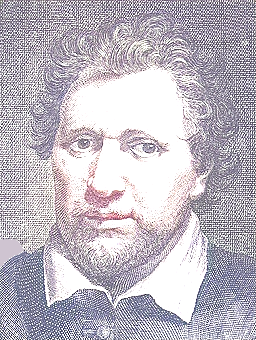
Figure-4B: Benjamin Jonson (June 1572-August 1637), an English poet and writer described stealing literary work as “Plagiary”
Medical journals should encourage their authors to use their own words, not only to stay away from violating the rights of others, but also to improve their own writing skills. If authors need to quote literally, the quotation should be included in inverted commas, and attributed and limited to very few sentences.
Editors of medical journals have to make sure that research has been conducted within a scientifically accepted, ethical basis, and that what is accepted for publication is a genuine, original research. Medical journals should have policies aiming at maintaining ethical standards, and dealing with any violation to the ethical standards with appropriate procedures. Table-18 summarizes some important guidelines to reduce the occurrence ethical problems resulting from author’s conduct of a study in a medical journal.
Table-18 Guidelines to reduce the occurrence ethical problems resulting from authors conduct of a study in a medical journal |
1-Check that authors have followed the ethical standards for medical research in relation to humans and animals by checking the followings: A-Validity of the research. B-Adherence to the relevant good practice guidelines and internationally recommended guidelines for research. C- Ethical approval for research obtained from a relevant body. D-Informed consent (whether verbal or written) was obtained. E-Approval of the relevant institutional review board (IRV) when it exists in the country and relevant. F-Malfeasance.
2-Chech that the list of authors was made according to the Uniform requirements for manuscripts submitted to biomedical journals [BOX-1] “An author is someone who contributed substantively to the paper based on contribution to all of the following aspects of the study: concept and design, acquisition of data or analysis and interpretation of data, drafting or revising the article critically and final approval of the version to be published". 3-Ask for the following author’s statements: A-If any funding was received, it didn’t influence the results or the independence of the author to publish the results or own the data. B-Author’s declaration of any conflict of interests as part of the submission process. 4-Try to detect any fraud which is the presentation of faked/invented data, or interference with methods, or selective reporting of data. 5-Try to detect any plagiarism. 6-Prevent copyright infringements by asking the author to confirm that they have received permission to use any already-published content and by offering authors a “permission request” form to use already published items within their papers. 7-Reducing duplicate publications (simultaneous submission of manuscript to more than one journal) by: A-Clearly stating in the “Instruction for authors” that the journal accepts only submissions solely submitted to it B-Reducing the time from submission to journal decision of acceptance and rejection. |
Many authors throughout the world may no be aware of some practices that are now recognized as ethical misconduct such as duplicate and redundant submissions, competing manuscripts and honorary authorship. Honorary authorship when people who are not real authors are included in authors list such as heads of department or supervisors included as authors even though they did not meet the authorship criteria. The help of such people should be acknowledged rather than adding their names to the author list.
BOX-1: Uniform Requirements for Manuscripts Submitted to Biomedical Journals |
ICMJE which was initially called the Vancouver Group, after the site of their first meeting in Vancouver, British Columbia in Canada. They described guidelines aiming at standardizing the preparation and formatting of papers submitted to biomedical journals for publication. The ICMJE guidelines were first distributed in 1979 under the name “Uniform Requirements for Manuscripts Submitted to Biomedical Journals”. |
The use of “ghost” authors to help in preparing an article for publication is probably accepted in many scientific communities. Ghost authors help authors to improve the English and organization and make sure that it is ready for submission to international journals. There are no serious ethical consequences to this practice as many journals’ reviewers and editors are helping authors in the same way. Some “ghost” authors and medical writers are hired by the pharmaceutical companies to write paper from raw data findings of the research conducted by these pharmaceutical companies and develop articles from them. When these practices are transparent to the editors and the readers, they are accepted. Ghost editors and medical writers are helping busy researchers and authors who are not experienced in the language of publication. They help to report the researcher’s findings in a more accurate and comprehensive manner. It is important to realize that the named authors take full responsibility for the content of the published article, and must approve it before publication, and it can be useful to acknowledge the help of these “Ghost” authors [9,12,17,18].
Ethical Problems Related to Editors, Reviewers, And Journal Staff Conflict of interest and bias
Ethical problems can occur when editors, reviewers or journal staff has interests or ties that could affect their judgment of a manuscript such personal relationship, and academic competition.
Conflict of interest occurs when any one in the editorial team has personal interests that could inappropriately affect their judgment, apart from of whether their judgment is being affected. Various relationships such financial and personal considerations, intellectual passions, and academic competition, all can be associated with conflict of interest. The International Committee of Medical Journal Editors considered financial considerations are the most prevalent. Authors, reviewers, and editors may look favorably to manuscripts describing a method or product in which they hold personal interest and companies may attempt to prevent publications that negatively affect their products. Ideally the editor is expected to delegate another member of the editorial board to evaluate a manuscript when he/she feels that a conflict of interest can be present. The growth in academia-industry relationships raised the possibility that editors or reviewers may act in ways that enhance their personal or financial gains. Editors and reviewers may look favorably at research from friends, collaborators, or scientists that have the same beliefs. The opposite can occur if a reviewer comes across s a manuscript from an author who bears a competing idea or an author that he is personally disliked. The secretive nature of the modern peer review process in which reviewers’ identities are not known to the authors, conflict of interest are difficult to uncover. Therefore, reviewers of many journals are asked to declare any conflict of interest associated with their review. We found some reports about how open peer review has helped in discovering reviewers’ undisclosed competing interests. Bias and prejudice affects the accuracy and objectivity of the interpretation of scientific papers. Editors may favor outstanding authors, and reviewers can do the same in an open peer review system. However, a study carried out by the Journal of Pediatrics showed that while there was an association between high institutional status and acceptance of brief reports, this relationship was not observed in the acceptance rates of regular articles. Loss of objectivity of editors and reviewers because of ideological differences, avoidance of unconventional ideas, and personal views on the subject can also result in unfair decision. Avoidance of controversial topics by reviewers and editors could hinder or delay the progress of science. Interestingly, when Hans Krebs (Figure-5A) described of the citric acid cycle and Barbara McClintock (Figure-5A) described mobile gene elements, their papers were rejected by “Nature”. The authors of these papers won the Nobel Prize for their research later.
Confidentiality
All manuscripts and commentaries of reviewers have to be protected from any unnecessary exposure to others or use by any party from inside or outside the journal.
Editor’s independence
The editor should make sure from the beginning that the sponsoring organization will be keen on respecting the independence of the editor and will not try to influence the content of the journal.
Ethics and advertisements
In medical journals, advertisement of pharmaceutical companies for their products should adhere to national and international standards for advertisements. Medical journals should avoid over-advertising for few companies. Medical journals avoid including misleading or exaggerated claims in advertisements [7,9].

Figure-5A: Hans Adolf Krebs (August 25, 1900-November 22, 1981) a German-born British biologist and physician who won a Nobel Prize in Physiology or Medicine in 1953 for describing the citric acid cycle "Krebs cycle"

Figure-5B: Barbara McClintock (June 16, 1902-September 2, 1992), an American scientist and cytogeneticist who received in1983 the Nobel Prize in Physiology or Medicine for describing genetic transposition
Medical Editing
The benefit of scientific paper writing and publication is to document scientific facts, practices and to form hypothesis and apply proven facts to patient care by challenging the current practices and subjecting them to the judgment of peers. In this way scientific knowledge can advance. Medical researches and clinical trials have become an important part of the modern scientific medicine. All the advances in medicine have been rightly attributed to the results of successful clinical trials and researches. The scientific and clinical achievements and the expansion of medical knowledge was associated with the emergence of the science and art of medical editing leading to a major publishing accomplishment with appearance of a large number of peer- reviewed medical publications mostly journals that have been an important contributor to the advancement of the medical knowledge.
Medical editing plays a vital role in promotion for patient care, knowledge sharing, influencing health outcomes and informing the policy makers. Medical editing also help in knowing the gap between what is known and what is done in practice. Many of the solutions to health problems are known but are not applied. This knowledge gap is also the main obstacle to progress in improving health. Medical Editing is a process that aims at providing high-quality, scientific publication of researches, reports and other scientific materials to enhance readability. Medical editing helps to improve papers by improving the clarity and focus and ensuring that ideas are expressed clearly and effectively. The acquisition of the skills of medical editing begins with reading of medical articles and reaches a climax by editing manuscripts for medical journals. Figure-6 shows the stages of the acquisition of medical editing skills.
If we trace the steps of medical editing for an article published in a medical journal, we will find that the process of medical editing is initiated by the author of the article.
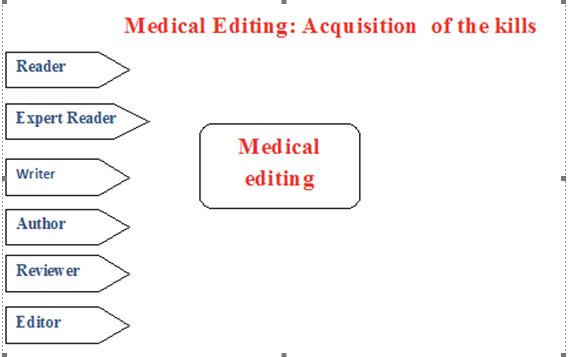
Figure-6: The stages of the acquisition of medical editing skills
The initial substantive medical editing following writing a manuscript in contemporary medical editing is the duty of the author. Writing, rewriting or paraphrasing any part of the document, rewriting sentences, eliminating redundancies, restructure paragraphs, condense materials, remove jargon, checking nomenclature and usage, ensuring that the manuscript clearly and effectively presents its information to the intended audience.
The author is also responsible for formatting the abstract, references, text, tables, figures, and legends so that they conform to the journal's instructions for authors or to the Uniform Requirements for Manuscripts Submitted to Biomedical Journal. The author should ensure the accuracy the reference section by verifying each reference at Google search engine.
Medical journal’s reviewers are expected to play an important constructive role in complimenting the primary editing made by the authors. Reviewer’s role in medical editing is achieved by sending comments and instructions guiding the authors to improve the scientific content of the paper.
In most medical journals the main medical editing role of the journal’s editors is to ensure that the authors with help of the reviewers have perfectly accomplished the editing of the submitted manuscripts.
Authors, reviewers, and medical journal editors need to master the basic skills of medical editing which include [1,7,9]:
1-Basic Grammar: Thorough knowledge of parts of speech is a basic to good writing and editing. Types of nouns and pronouns, verb tense, pronouns a, phrases and clauses, and the types of sentences.
2-Effective Paragraphing: Knowledge with some basic paragraphing techniques for achieving clarity, readability, and desired emphasis. Mastering a systematic approach to analyzing and correcting text. Options for arranging paragraphs and using transitions.
3-Adequate knowledge of Medical Terminology and nomenclature.
4-Punctuation for Clarity and Style: Knowledge of the most useful punctuation rules and options-from the serial comma to the dash.
5-Sentence Structure and Patterns: Thorough knowledge of the main elements of sentence construction.
6-Adequate knowledge of medical statistics: Knowledge of the statistical concepts is necessary for understanding medical and scientific articles.
7-Knowledge in Biomedical Research Design.
8-Mastering Copyediting: Copyediting is the process in which a manuscript is prepared for publication by revisions that ensure clarity, accuracy, and consistency.
9-Ethical Standards in Medical Publication: Knowledge of the essential publication guidelines and existing ethical standards.
10-Understanding of the importance of evidence-based science editing
Medical Editorship and Editing as Tool of Medical Knowledge Management
Medical editorship and medical editing represent some of the important tools and practices of medical knowledge management which enables doctors to generate knowledge, and to share, translate and apply what they know to create value and improve effectiveness. Medical editorship and medical editing play an integral role in the modern production of medical knowledge as it provides the necessary organization of the medical of knowledge into evidences and organized experiences. Medical knowledge is created through collection of local experiences around specific clinical cases and health services/ programs, leading to the generation of new understandings of relationships between specific factors, processes, and outcomes from primary research such as a randomized trial or case study in a particular health setting. Medical editorship and editing are crucial components in the synthesis of available research findings, policy advice, and local experiences in specific areas of health through. Medical editorship and editing also help in the identification of individuals, groups, and organizations as resources with expertise or experience in specific areas of health who are willing to share their tacit knowledge [1,9,19]. Figure-7 (A, and B) shows how medical editorship and editing works as a tool of medical knowledge management.
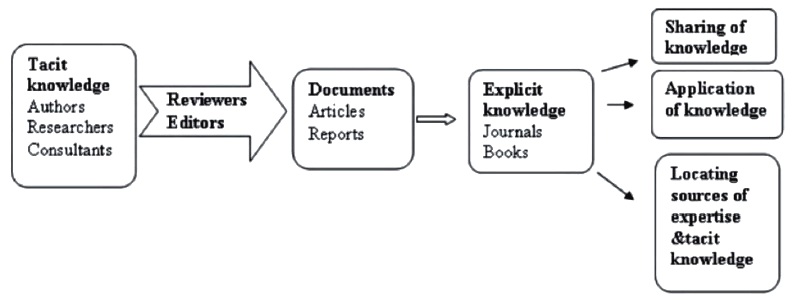
Figure-7A: Medical editorship and editing works as a tool of medical knowledge management

Figure-7B: Medical editorship and editing works as a tool of medical knowledge management
Medical Editorship and Academic Medical Leadership
Adam Chapnick (Figure-8A) and Kim Richard Nossal (Figure-8B) emphasized that medical editorship through academic journal editorship and editorial board membership for academic journals has been increasingly considered a measure of the respect and recognition for the academics because it enables them to contribute to the emergence and evolution of important publications. Board members commonly serve as a source of information, expertise for editors. They also emphasized that journals’ editors and some editorial boards especially in the medical sciences, are powerful academics that can make policy, and assume part of the public personality of the journal they serve.
Arthur G. Bedeian (Figure-8C), David D. Van Fleet (Figure-8D), and Hugh H. Hyman III emphasized that editorial board members are not just determining which academics and scholars have to be approved for their achievement, but they also influence how the scientific papers and achievements are published through their guidelines and recommendations [9,20,21,22].

Figure-8A: Adam Chapnick, a Canadian academic and expert. He edited International Journal from 2013 to 2015

Figure-8B: Kim Richard Nossal, a Canadian academic and expert. He served as editor of International Journal from 1992 to 1997

Figure-8C: Arthur G. Bedeian from Louisiana State University

Figure-8D: David D. Van Fleet from Arizona State University
Acknowledgement
Some of the figures in this book have been included in previous author's publications, but the author has their copy right.
The kind permission of The New Iraqi Journal of Medicine was granted to publish figure 7 (A &B).
Conflict of interest
None.
References
- Al-Mosawi AJ. (2013), Medical journals editorship and medical editing. 1st ed., Saarbrücken; LAP Lambert Academic Publishing: (ISBN: 978-3-659-47281-7).
- Al-Mosawi AJ. (2005), Our Experience with continuing medical education (CME) programme. The CME center, University Hospital in AL-Kadhimiyia. The New Iraqi Journal of Medicine (ISSN: 1817-5562, 1998037X); 1(3): 8-9. Doi: 10.5281/zenodo.3874257.
- Al-Mosawi AJ. (2007), Continuing Medical education: Principles, concepts, and standards. The New Iraqi Journal of Medicine (ISSN: 1817-5562, 1998037X); 3 (2): 32-35. Doi: 10.5281/zenodo.3876960.
- Al-Mosawi AJ. (2022), An introduction to contemporary academic medical leadership. Journal of Advances in Social Science and Humanities (ISSN: 2795-9481); 08 (04):86-101.
- Al-Mosawi AJ. (2013), The New Iraqi Journal of Medicine Volume one December 2005. 1st ed., Saarbrücken; LAP Lambert Academic Publishing: (ISBN: 978-3-659-49955-5).
- Al-Mosawi AJ. (2006), The Practice of evidence-based medicine. The New Iraqi Journal of Medicine (ISSN: 1817-5562, 1998037X); 2(1):8-10.
- Al-Mosawi AJ. (2022), Medical journals editorship and medical editing: A concise textbook. LAP LAMBERT Academic Publishing: September, (ISBN: 978-620-5-49938-2).
- Spier R. The history of the peer-review process. Trends Biotechnol 2002 Aug; 20(8):357-8. Doi: 10.1016/s0167-7799(02)01985-6.
- Al-Mosawi AJ. (2022), Principles of medical journals editorship and medical editing. Scholars' Press, September 2022 (ISBN: 978-613-8-97310-2).
- Al-Mosawi AJ. (2006), Silk granuloma: Editorial commentary. The New Iraqi Journal of Medicine (ISSN: 1817-5562, 1998037X); 2 (1): 37-38.
- Al-Mosawi AJ. (2007), The New Iraqi Journal of Medicine: More goals to achieve. The New Iraqi Journal of Medicine (ISSN: 1817-5562, 1998037X); 3 (3): 7-10. Doi: 10.5281/ zenodo.3875134.
- Al-Hasnawi S, Abbas YA, Al-Mosawi AJ. (2008), The New Iraqi Journal of Medicine: The indexation challenge. The New Iraqi Journal of Medicine (ISSN: 1817-5562, 1998037X) August 2008; 4 (2):9-10. Doi: 10. 5281/zenodo.3878092.
- Al-Mosawi AJ [Invited speaker]. (2008), The New Iraqi Journal of Medicine: An Emerging International Iraqi Peer-Reviewed Medical Journal [Conference paper]. Abstracts book: Fourth regional conference on medical journals in the Eastern Mediterranean region 5-7 November, Bahrain. Doi: 10.5281/zenodo.3878911.
- Al-Mosawi AJ. (2021), The First Iraqi Medical Journal to be included in Scopus: History of Medicine. Scholars' Press 10 August 2021 (ISBN: 978-613-8-95777-5).
- Al-Mosawi AJ. (2022), Iraqi pediatricians’ contribution to international journals editorship. LAP LAMBERT Academic Publishing: (ISBN-13:978-620-4-73793-5, ISBN-10: 6204737937).
- Al-Mosawi AJ. (2012), Management principles for doctors.1st ed., Saarbrücken; LAP Lambert Academic Publishing: 9-2-2012 (ISBN: 978-3-8484-0500-8).
- Al-Mosawi AJ. (2022), Principles of academic medical leadership. LAP LAMBERT Academic Publishing: (ISBN-13:978-620-4-74976-1, ISBN: 6204749765).
- Al-Mosawi AJ. (2022), Contemporary academic medical leadership: A concise textbook. Scholars' Press, (ISBN: 978-620-2-30491-7).
- Al-Mosawi AJ. (2011), Medical knowledge management and managing knowledge within the health setting The New Iraqi Journal of Medicine (ISSN: 1817-5562, 1998037X). August 2011; 7(2):78-83. Doi: 10.5281/zenodo. 3875155.
- Al-Mosawi AJ. (2022), Zeitgemäße akademische medizinische Führung : Ein kompaktes Lehrbuch (German edition).Verlag Unser Wissen : (ISBN-13: 978-620-4 819 55-6, ISBN-10: 6204819550).
- Al-Mosawi AJ. (2022), Le leadership médical universitaire contemporain: Un manuel concis (French edition). Editions Notre Savoir: (ISBN-13: 978-620-4-81958-7, ISBN-10: 6204819585).
- Al-Mosawi AJ. (2022), Современное руководство академической медициной: Краткий учебник (Russian edition). Sciencia Scripts: (ISBN-13: 978-620-4-81962-4, ISBN-10: 6204819623).
Quick links
- Abstract
- Introduction
- Peer Reviewed Medical Journals
- Medical Journals and The Role of Editors
- Medical Journal Scope and Structure
- Medical Journal Primary Audience
- Medical Journal Policies
- Journal Structure, Design and Format
- Medical Journal Leadership and Ownership
- The Editorial Board
- Journal Owners
- Publisher
- Medical Journal Stakeholders
- Editor-In-Chief/Editor
- Associate Editors/Assistant Editor
- Editorial Boards and Advisory Boards
- Technical Editors, Language Editors and Copy Editors
- Journal's Authors, Reviwers and Readers
- Journal's Reviewers
- Readers
- Medical Journal Management
- Swot Analysis
- Strengths (Capitalize):
- Weakness (Shore-up)
- Opportunities (Invest)
- Threats (Identify)
- Editorial Office Processes
- Journal Promotion
- Medical Journals Publishing Models
- Journal's Indexation
- Manuscript Evaluation: Peer Review
- Medical Journals Production
- Authors Related Ethical Problems
- Ethics And Medical Journalism
- Ethical Problems Related to Editors, Reviewers, And Journal Staff Conflict of interest and bias
- Confidentiality
- Editorâs independence
- Ethics and advertisements
- Medical Editing
- Medical Editorship and Editing as Tool of Medical Knowledge Management
- Medical Editorship and Academic Medical Leadership
- Acknowledgement
- Conflict of interest
- References


